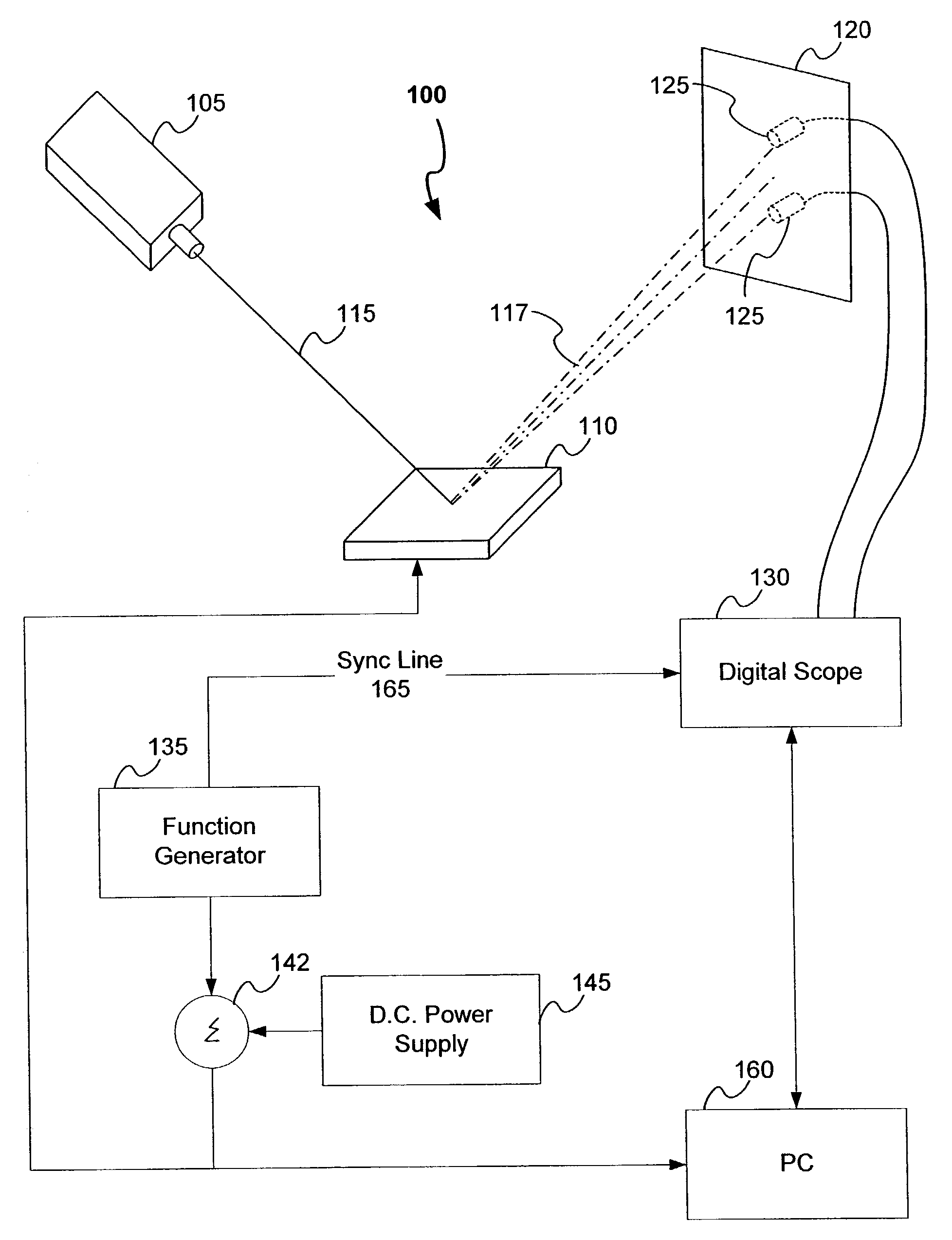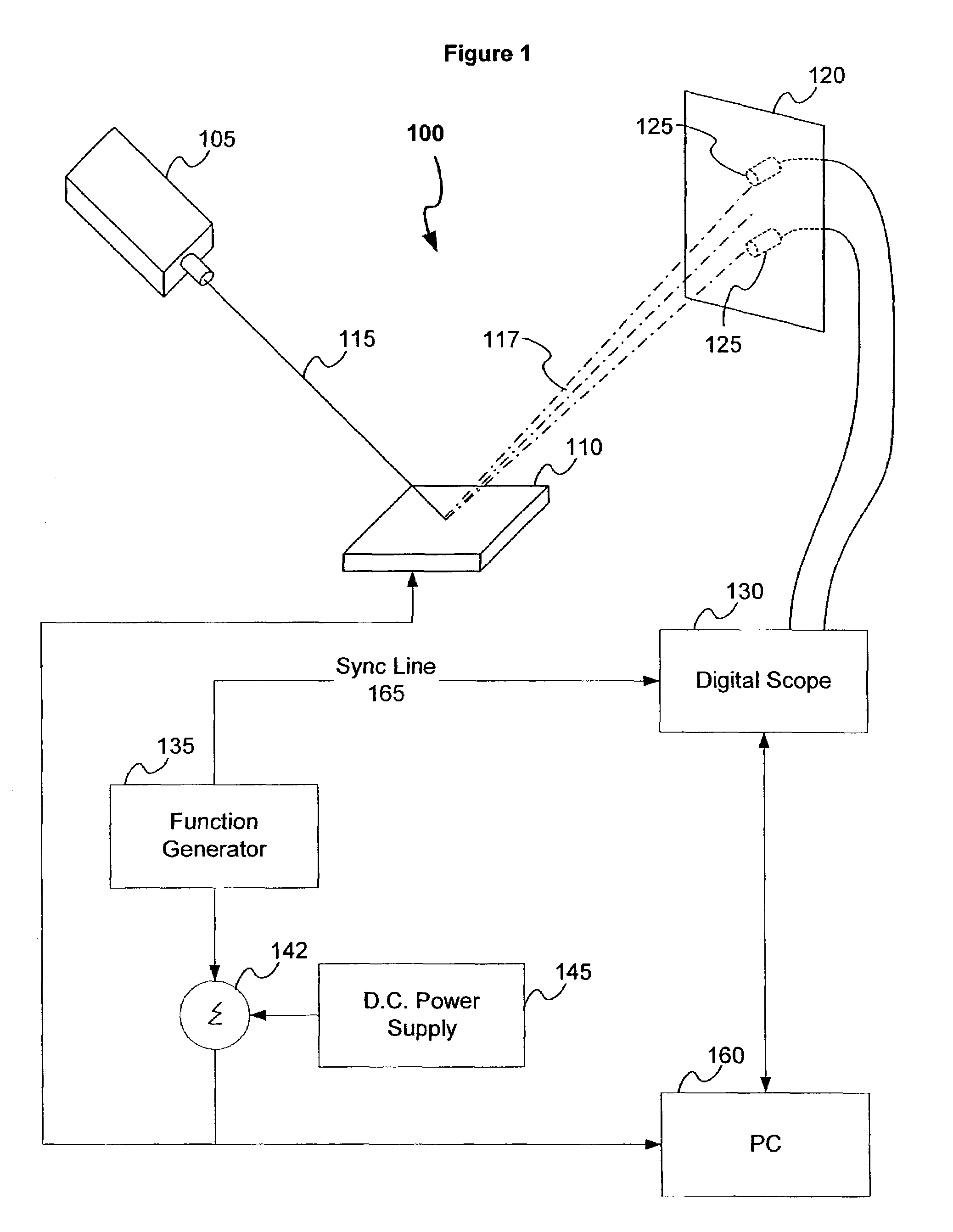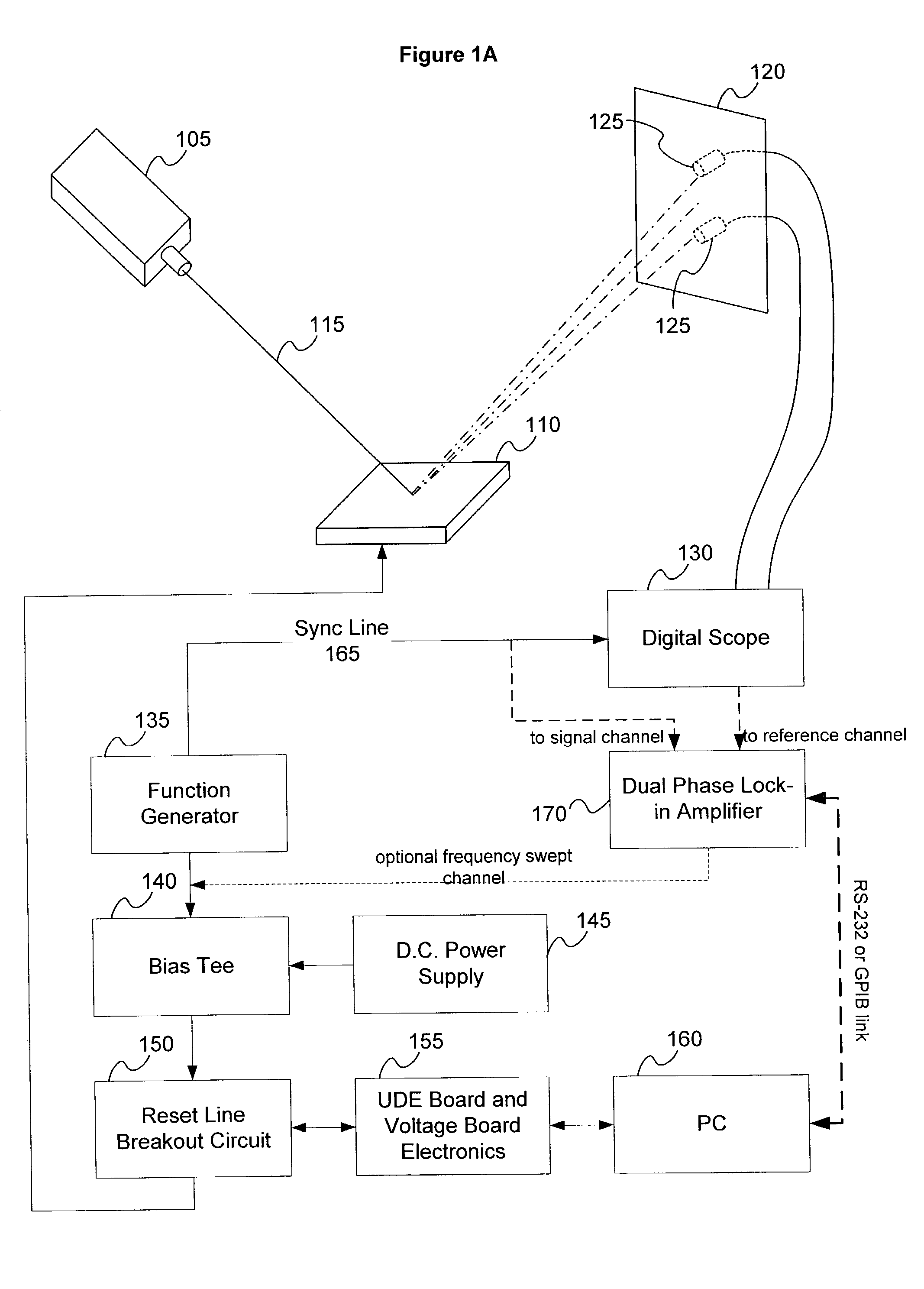Method and apparatus for measuring temporal response characteristics of digital mirror devices
- Summary
- Abstract
- Description
- Claims
- Application Information
AI Technical Summary
Benefits of technology
Problems solved by technology
Method used
Image
Examples
Embodiment Construction
[0026]Micromirrors, like any other mechanical system, can be modeled using second order differential equations. For example, the transient response of a mechanical mass-spring-damper system can be modeled using the following equation:
[0027]M∂2y(t)∂t2+B∂y(t)∂t+Ky(t)=f(t)(1.1)
wherein f(t) is the applied force, M is the mass, B is the damping coefficient, K is the linear spring constant, and y(t) is the displacement of the system. Micromirrors, which have mass, spring-like mounts, and can have damping forces applied, can therefore be accurately modeled with equations similar to equation (1.1).
[0028]It is well known that second order differential equations can be readily converted into the frequency domain to facilitate analysis of the transient response of the system. The following equation (1.2) represents the Laplace transform of equation (1.1), which places equation (1.1) in the frequency domain:
[0029]G(s)=1s(Ms2+Bs+K)(1.2)
By applying well known mathematical theories ...
PUM
 Login to View More
Login to View More Abstract
Description
Claims
Application Information
 Login to View More
Login to View More - R&D
- Intellectual Property
- Life Sciences
- Materials
- Tech Scout
- Unparalleled Data Quality
- Higher Quality Content
- 60% Fewer Hallucinations
Browse by: Latest US Patents, China's latest patents, Technical Efficacy Thesaurus, Application Domain, Technology Topic, Popular Technical Reports.
© 2025 PatSnap. All rights reserved.Legal|Privacy policy|Modern Slavery Act Transparency Statement|Sitemap|About US| Contact US: help@patsnap.com



